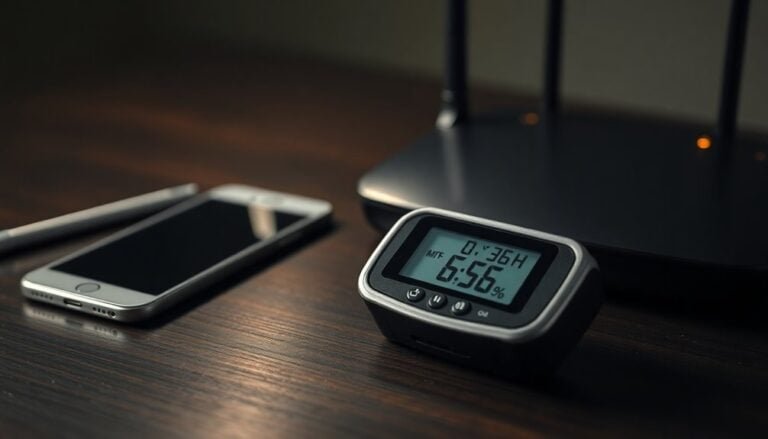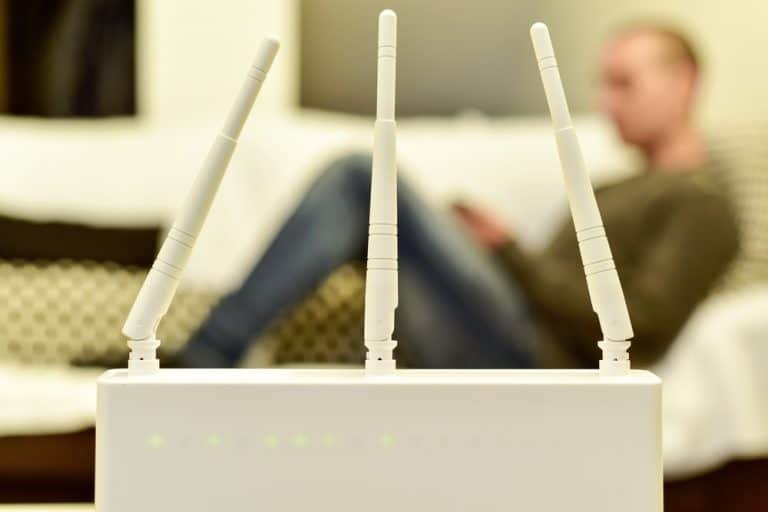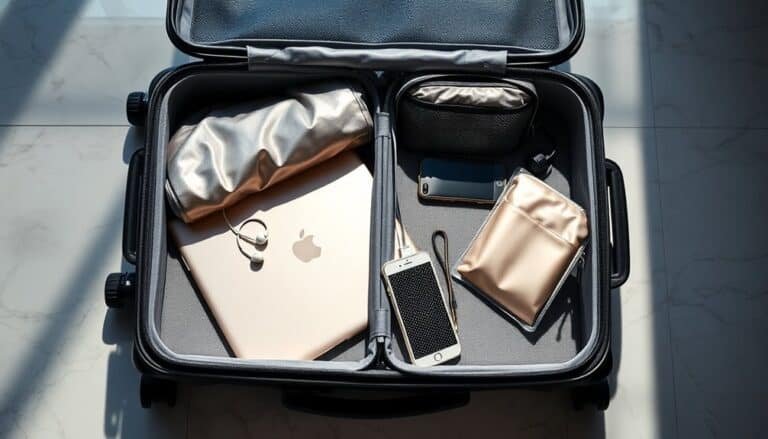At-Home EMF Safety Checklist

To ensure safety from EMF exposure at home, start by identifying sources like microwaves and washing machines and reduce exposure by unplugging devices, limiting high-EMF appliances, and creating EMF-free zones, especially in bedrooms. Use certified meters to measure EMF levels strategically and consider EMF-proof paint or shielding fabric.
For smart devices, minimize their proximity and usage, and continue exploring advanced EMF management strategies.
Disclaimer: As an affiliate, I may collect a share of sales from the links on this page.
Assessing EMF Sources

How can you identify the electromagnetic field (EMF) sources in your home?
Start by checking your appliances. Microwaves emit RF radiation and can peak over 70 µT. Electric ovens produce fields above 5 µT, while washing machines can reach over 30 µT. Kettles also contribute, exceeding 15 µT. Most household appliances have magnetic field strengths significantly below safety reference levels at normal usage distances.
Next, evaluate home networks. Wi-Fi routers and smart meters continuously emit RF signals.
Consider personal devices too; cell phones and tablets emit EMF through antennas and connectivity.
Finally, assess your environment for low-frequency sources like power lines and electrical wiring, which can contribute notably to overall EMF levels in your household.
Reducing EMF Exposure
Reducing your exposure to electromagnetic fields (EMFs) involves several practical steps that can markedly lower overall emissions in your home. Unplug unused devices to cut energy consumption and ELF exposure. Limit the use of appliances like hair dryers and heating pads. Due to the potential increased exposure to nonionizing radiation, creating EMF-free zones by removing electronic devices from bedrooms is especially important. Additionally, staying informed about EMF research can help you make better decisions about device usage and safety. Improve wireless reception to minimize device output power. Use power strips for easy device shutdown. Consider wired connections, such as Ethernet cables, to further mitigate RF exposure. Finally, educate household members about energy-saving practices and establish a policy to power down devices at night for enhanced safety.
Conducting EMF Measurements

Conducting effective EMF measurements is essential for evaluating exposure levels in your home.
To guarantee accurate results, follow these guidelines:
- Select the right tools: Use certified meters like the Trifield EMF Meter or Meterk EMF Meter.
- Measure in strategic locations: Focus on areas like bedrooms and workspaces, as they are often where higher EMF levels can be found.
- Time your measurements: Assess EMFs at different times to capture fluctuations in readings.
- Take multiple readings: Gather data over time for consistency and reliability.
These steps will help you identify EMF sources and guarantee your measurements reflect better potential exposure levels in your environment. Additionally, remember that electric power is a common source of EMFs found wherever there is electric service.
Implementing Safety Measures
Implementing effective safety measures against electromagnetic fields (EMF) is essential for maintaining a healthier home environment.
Start by installing stainless steel mesh on walls and floors to reduce radiation penetration. Use shielding fabric under beds and furniture, and consider radiation-blocking curtains for your windows. Incorporating EMF shielding fabric into your home can help create a safer environment by limiting exposure to harmful electromagnetic radiation.
Apply EMF-proof paint on walls for added protection. Position Wi-Fi routers away from bedrooms, and turn off devices when not in use to minimize exposure.
Replace cordless devices with wired ones, and avoid electric blankets at night.
Smart Home Device Considerations

How can smart home devices impact your EMF exposure? These devices continuously emit radiofrequency EMF through Wi-Fi and Bluetooth connections.
To manage your exposure, consider the following:
- Place devices away from bedrooms and living areas to minimize direct exposure.
- Avoid clustering multiple wireless devices in one area, as this increases cumulative EMF levels.
- Use wired connections for security systems, reducing wireless signal emissions.
- Disconnect smart features when not in use to lower overall EMF output.
Frequently Asked Questions
What Are the Health Effects of Long-Term EMF Exposure?
Long-term EMF exposure can lead to oxidative stress, cognitive impairment, fatigue, and headaches. You might also experience anxiety or sleep disturbances. It’s essential to stay informed about potential risks and consider protective measures.
How Can I Reduce My Child’s EMF Exposure at Home?
Like shadows stretching at dusk, distance shields your child from EMF. Keep devices away, switch to wired options, and cultivate tech-free zones. In your hands, the power to create a safer haven thrives.
Are EMF Shields Effective for All Devices?
EMF shields aren’t universally effective for all devices. Their effectiveness varies based on device type and frequency. You’ll need to assess each situation uniquely to determine the right shielding approach for your specific needs.
Can Plants Reduce EMF Levels in a Home?
Did you know that certain plants, like the spider plant, can absorb up to 90% of common indoor pollutants? While plants might help, their ability to reduce EMF levels isn’t scientifically proven, so don’t rely solely on them.
How Often Should I Measure EMF Levels in My Home?
You should measure EMF levels regularly, especially after installing new devices or changing usage patterns. Regular checks help you stay aware of potential increases due to external influences or new technologies affecting your home environment.
Conclusion
Think of your home as a garden when managing EMF exposure. Identify sources like weeds and reduce exposure to encourage growth. Conduct measurements to uncover hidden dangers. Implement safety measures to build a protective fence around your sanctuary. Consider smart devices to ensure a rich and safe harvest. Stay vigilant to maintain a healthy environment where technology thrives without compromising your well-being.






